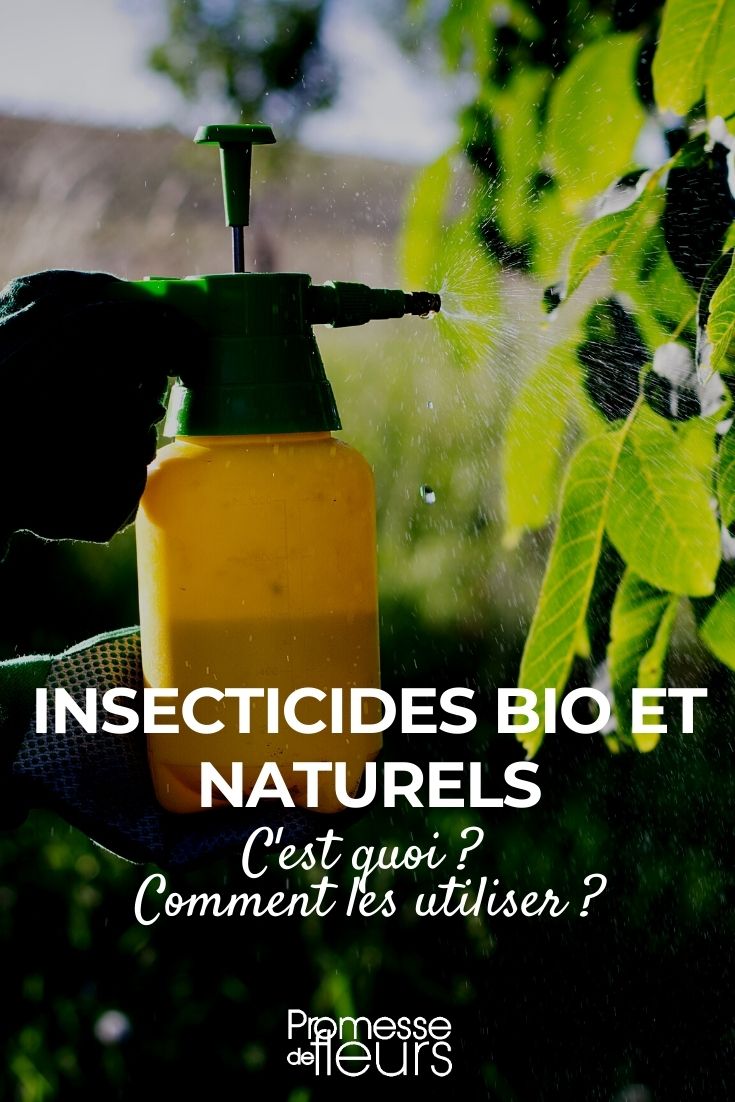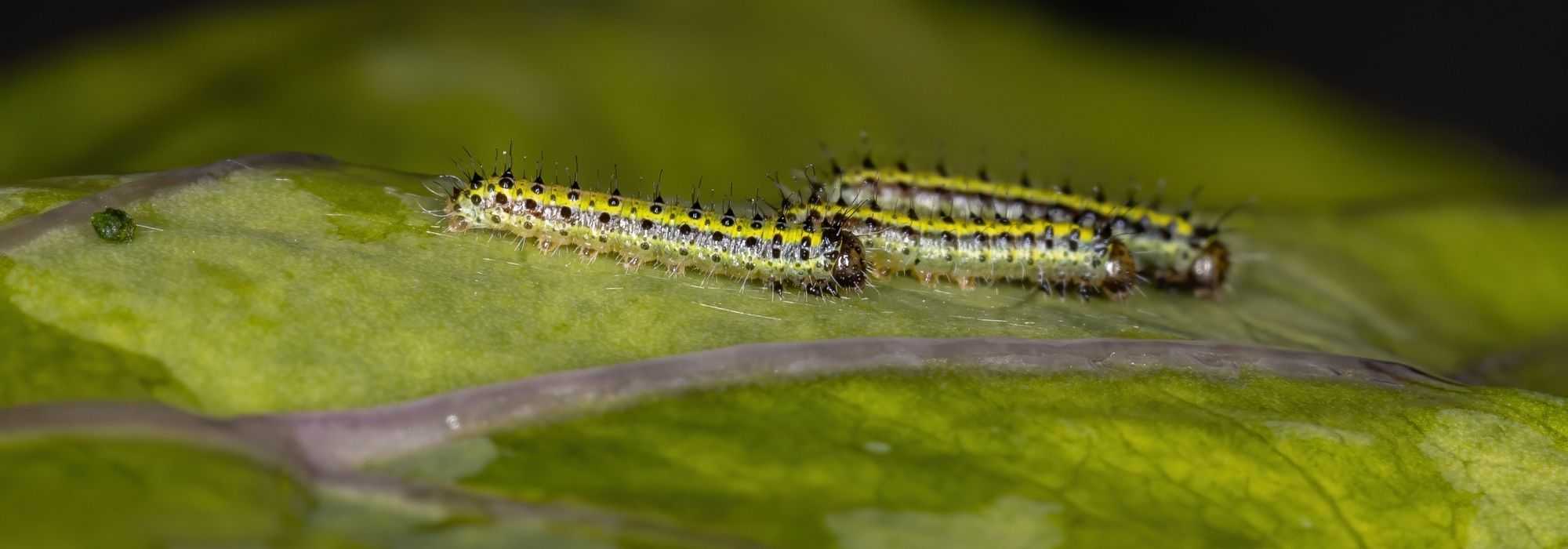
Organic and natural insecticidal products: what are they and how to use them?
Organic and effective treatments
Contents
Insects and other small arthropods such as arachnids or terrestrial crustaceans are part of Nature and therefore part of our garden too. Most of the time, they are as harmless as they are important for the balance of nature and for the good health of our plants. But sometimes, an invasion of a species can cause problems: the insects are then considered pests. It is necessary to intervene with a radical but, if possible, environmentally friendly solution. The solution could be to use a natural insecticidal product. Here is an overview of the main natural insecticidal products to make yourself or to buy in a shop.
What is an organic or natural insecticidal product?
Insecticidal products, by definition, kill insects. Some are specific to a given species. Others attack all insects indiscriminately.
There are chemical insecticidal products that are harmful to the environment and sometimes to human health. They are, moreover, banned from use in our gardens. In that regard, feel free to read Ingrid’s article on pesticidal products.
But there are also naturally derived insecticidal products that are authorised and widely used in organic agriculture and also in our gardens. These are the ones we will describe in this advice sheet.
Thuringian bacilli
Thuringian bacilli or Bacillus thuringiensis, or simply BT, are bacteria found everywhere in nature in small amounts: in air, in water, in soil but also on plants themselves. These bacilli produce a molecule called thuringiensin. These insecticidal bacteria are the most widely used in organic agriculture.
There are several different strains. The bacteria therefore attack a single type of insect or a single species without directly affecting other insects. There are strains that attack only caterpillars of box tree moth, pine processionary caterpillars, and even mosquito larvae, to name but a few examples. Bacillus thuringiensis can also be used against certain flies, as well as beetles such as Colorado potato beetle and the lily beetle, and of course the caterpillars of moths such as clothes moths, tortrix moths, leafminers, whites, noctuids or codling moths.
Effect is dramatic! Thuringian bacilli produce endotoxins that destroy cells in insect gut, while spreading bacteria throughout body and creating a systemic infection. Insect can no longer feed and dies shortly afterwards. Bacillus will continue to consume the corpse thereafter.
BT have advantage of degrading very quickly under UV rays, heat and even simply in water. Persistence of this type of treatment is therefore almost nil according to current studies. However, Bacillus thurigiensis are not entirely harmless to warm-blooded animals. One study showed that rats given daily and relatively high doses of thuringiensin exhibited nervous disorders as well as lung conditions. Amphibian larvae can also be affected by high doses of Thuringian bacilli. Note that BT tend to persist in moist soil (which is paradoxical!). Long-term effects on environment are not yet known.
Certain insect populations develop resistance to Thuringian bacilli over time, making treatments less and less effective.
Did you know? Some GMO plants have been genetically modified to produce BT toxin themselves, thereby creating their own insecticidal protection within their tissues.
How to use BT?
- Use is strictly curative
- Bacillus thuringiensis or BT comes as a powder to be diluted in water
- Spray this solution over all affected parts of plant
- Repeat every 8 to 10 days if needed
- Avoid rainy periods as treatment will be ineffective
- Avoid periods of flowering to limit impact on other insects.
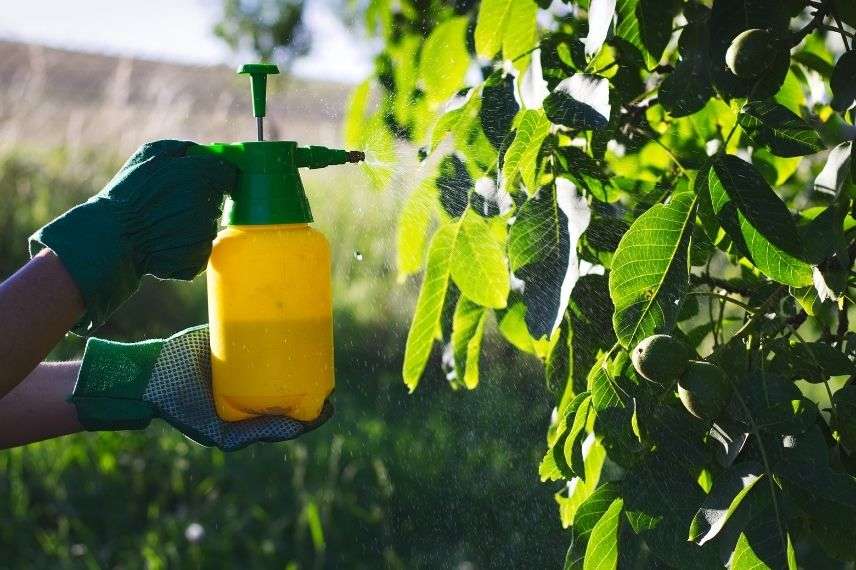
Natural pyrethrum-based insecticidal products
In fact, although term pyrethrum is commonly used in everyday language, these insecticidal products should be called by name of molecule: pyrethrin.
Pyrethrin is produced naturally by some plants such as Dalmatian pyrethrum (from which molecule takes its name) but also by certain chrysanthemums such as Tanacetum coccineum, for example. This molecule naturally has repellent properties and slight insecticidal activity. This insecticidal effect has been known since Antiquity.
Pyrethrins attack nervous system of cold-blooded animals (fish, reptiles and amphibians) and, of course, insects. Depending on dosage, pyrethrins will be only repellent or lethal to insects. Other natural insecticidal substances from other plants are known and used: jasminine and cinerine. Both have same effect and same efficacy as pyrethrin.
Warning! Exercise caution when using these natural insecticidal products because they will indiscriminately eliminate all insects and arachnids (not to mention aquatic fauna). All this will create serious repercussions on natural balance of your garden.
For information: in 1960s, synthetic pyrethrinoids were used instead of natural pyrethrins. But they were themselves rapidly replaced by other organochlorine and organophosphate insecticidal products far more dangerous for environment. Nevertheless, synthetic pyrethrinoids are also dangerous for some mammals, fish, reptiles and amphibians and, of course, insects, including beneficial and pollinating insects.
Did you know? Pyrethrin is an ingredient in most anti-lice products.
How to use pyrethrins, jasminines and cinerines?
- These insecticidal products are sold as powders or oils to be diluted in water
- For a preventative action, halve dose
- For a curative action, follow prescribed dose
- Spray on plant after sunset because molecule is degraded by light and you will kill (a little less) other insects that had done nothing to deserve it…
- Never treat near pond or pool because these molecules are extremely toxic for aquatic fauna
- Repeat treatment if needed after sunset and in dry weather.
Diatomaceous earth
Diatoms are microscopic algae of organic and fossil origin. They are tiny, measuring between 3 and 500 micrometres. Diatomaceous earth can be used to control certain insects such as ants, earwigs, cockroaches, bed bugs or woodlice.
Diatomaceous earth is available in two forms: “amorphous silica”, which is diatomaceous earth that has not undergone modification, and “crystalline silica”, which is diatomaceous earth calcined at 900 °C.
Concretely, diatomaceous earth is made up of particles so fine that they enter insects’ digestive systems, causing lesions. Moreover, the fine silica particles are very hard, which also causes abrasions to chitin covering legs and exoskeleton of arthropods (insects, spiders, woodlice…).
To use diatomaceous earth as a natural insecticidal agent, simply scatter it where insects are problematic. Silica remains effective for a long time because it breaks down slowly.
Note: its non-toxicity to vertebrates makes it the safest natural insecticidal for use in the home.
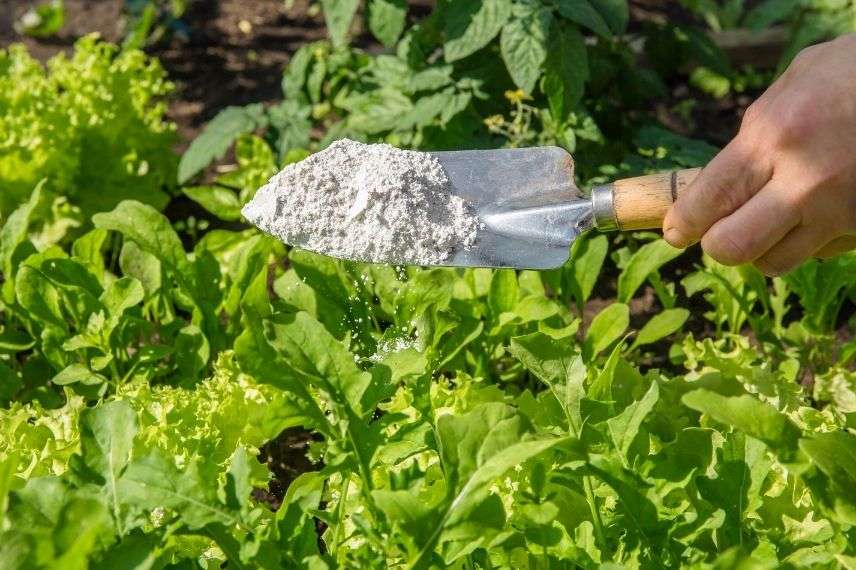
Special case of natural rotenone-based insecticidal products
Rotenone is a molecule found in the root and stem of certain tropical plants. Natives of the Amazonian forest, as well as inhabitants of Malaysia and equatorial Africa, use these molecules, known as ichthyotoxins, to “fish” for fish. Indeed, it is a molecule that reaches the breathing system of cold-blooded animals and kills them. Fish then float to the surface, dead. Needless to say the havoc this molecule causes in nature and on human health, notably affecting the nervous system…
Long used in insecticidal products in agriculture, rotenone has been completely banned since 2011.
Manures, infusions and decoctions of repellent and insecticidal plants
Some plants in our garden can help in the fight against six-legged pests. Simply prepare manures, decoctions or infusions depending on the plant and desired effect.
Manures
Fern manure is insecticidal and a repellent for aphids, leafhoppers, wireworms and even slugs.
- Place 1 kg of fern fronds in 10 litres of water in a plastic or wood container (no metal, which would oxidise)
- Stir the mixture daily with a stick
- Check manure. As soon as fermentation bubbles disappear, it is ready
- Strain manure to keep only the liquid
- Store in an opaque container for a few weeks
- Dilute manure to 5–10%, i.e. 5 or 10 cl in 1 litre of water.
- Apply to plant at base with watering water, or spray over whole plant.
Infusions
Infusions are simple to make but effective. Garlic infusion protects against leek moth and carrot fly, chamomile infusion against aphids, codling moths and the cabbage white.
- Pour boiling water over a few dozen grams of plant material
- Let infuse for 24 hours
- Strain then apply undiluted to affected plants.
Decoctions
Decoctions can be made from several different plants but for insecticidal or repellent effects the most effective are: garlic decoction against peach leaf curl; tansy decoction as a repellent against cabbage whites, noctuids, flea beetles and aphids; lavender decoction against ants, lavandin and clove decoction against wasps and mosquitoes; and wormwood decoction as a repellent against ants, aphids, codling moths and cabbage whites.
- Soak 100 g of plant in 1 litre of water for 24 hours
- Boil the mixture for 20 minutes
- Strain to retain only the liquid
- Spray undiluted onto plants to be treated immediately after preparation
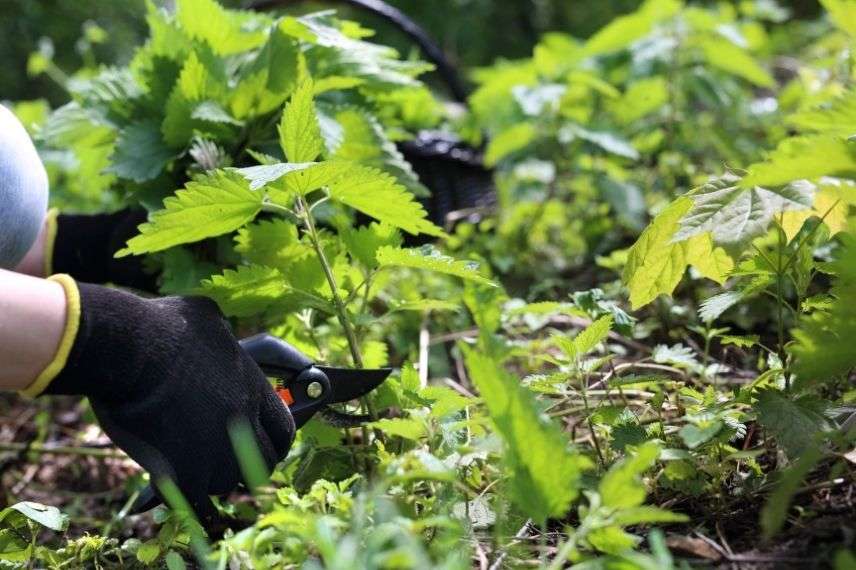
Essential oils
Essential oils are highly concentrated in active compounds. As a result, they are extremely effective. They can be either repellent (insect-repellent) or insecticidal. Some essential oils also have fungicidal properties.
Use 25 drops (no more!) of essential oils per litre of water. Add a small drop of black soap or organic washing-up liquid to help the oils emulsify in water. Spray the mixture.
Repellent: juniper essential oil against codling moth, clove or garlic essential oils against almost all harmful insects.
Insecticidal: peppermint or garlic essential oils against caterpillars and aphids, grapefruit essential oil against Colorado potato beetles, rose geranium essential oil against whiteflies and scale insects.
Warning: essential oils are not harmless for either gardener or plant! I recommend wearing a mask and long sleeves when applying. For the plant, do not treat too often or it could be harmful.
Rummage through your cupboards!
- Black soap and Savon de Marseille : dilute both in hot water. Savon de Marseille is effective against aphids but black soap has a broader spectrum and helps control aphids, whiteflies, scale insects, thrips and psyllids…
- Washing-up liquid : opt for a 100% eco-friendly soap, but washing-up liquid is also highly effective against aphids and scale insects. Spray a little diluted washing-up liquid onto affected plants.
- Rapeseed oil : this oil is insecticidal. Two tablespoons of rapeseed oil and two tablespoons of black soap in a litre of water. Then simply spray the mixture.
- Coffee grounds : they are reputed to repel ants, aphids and nematodes.
- Bicarbonate of soda : used at a rate of two tablespoons per litre of water, bicarbonate of soda has insecticidal, fungicidal and weedkiller properties. Use sparingly though, as it can sometimes be too effective.
- Plaster : a little plaster in water placed in strategic spots and you are rid of cockroaches. Indeed, they try to feed on it and die once the plaster has “set” in their gut. It’s gruesome but effective!
Did you know? Warning to arachnophobes who have a hard time in autumn when house spiders wander about. Conkers (fruit of the horse chestnut tree) have the ability to repel spiders. Take the opportunity to decorate your living room and bedroom with conkers! 😉
And what about biodiversity!
The term “organic” comes from the Greek “bios” which means “life”. Therefore, how can an insecticidal treatment, even supposedly natural, that destroys insect life, often to the detriment of nature’s balance, be called “organic”? Keep in mind that eliminating an animal, however insignificant it may seem to you, is not very ecological and it is best to let nature act as much as possible.
Opt for less drastic solutions: insect repellents, capture and relocation or… simply wait for nature to sort the problem out. Easier said than done, you might say? Especially when your fruits and vegetables are under attack. But remember the garden should remain a pleasure and we can tolerate a little loss. Which is obviously not the case for producers who depend on it for their livelihood and feed us in the process.
In short, think twice before applying treatments! And let us ask ourselves whether it is really worth intervening or not.
- Subscribe!
- Contents
